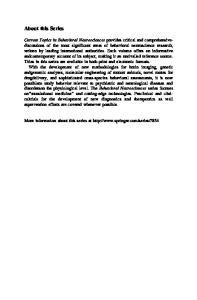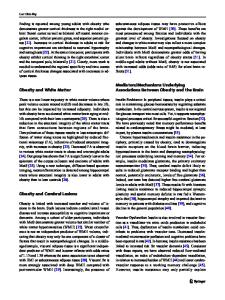Brain Function and Oscillations Integrative Brain Function. Neur
This book establishes a brain theory based on neural oscillations with a temporal relation to a well-defined event. New findings about oscillations at the cellular level show striking parallels with EEG and MEG measurements. The authors embrace both the l
- PDF / 51,952,414 Bytes
- 491 Pages / 439.37 x 666.142 pts Page_size
- 56 Downloads / 342 Views
Springer
Berlin Heidelberg New York Barcelona Hong Kong London Milan Paris Singapore Tokyo
Springer Series in Synergetics
Editor: Hermann Haken
An ever increasing number of scientific disciplines deal with complex systems. These are systems that are composed of many parts which interact with one another in a more or less complicated manner. One of the most striking features of many such systems is their ability to spontaneously form spatial or temporal structures. A great variety of these structures are found, in both the inanimate and the living world. In the inanimate world of physics and chemistry, examples include the growth of crystals, coherent oscillations of laser light, and the spiral structures formed in fluids and chemical reactions. In biology we encounter the growth of plants and animals (morphogenesis) and the evolution of species. In medicine we observe, for instance, the electromagnetic activity of the brain with its pronounced spatio-temporal structures. Psychology deals with characteristic features of human behavior ranging from simple pattern recognition tasks to complex patterns of social behavior. Examples from sociology include the formation of public opinion and cooperation or competition between social groups. In recent decades, it has become increasingly evident that all these seemingly quite different kinds of structure formation have a number of important features in common. The task of studying analogies as well as differences between structure formation in these different fields has proved to be an ambitious but highly rewarding endeavor. The Springer Series in Synergetics provides a forum for interdisciplinary research and discussions on this fascinating new scientific challenge. It deals with both experimental and theoretical aspects. The scientific community and the interested layman are becoming ever more conscious ofconcepts such as self-organization, instabilities, deterministic chaos, nonlinearity, dynamical systems, stochastic processes, and complexity. All of these concepts are facets of a field that tackles complex systems, namely synergetics. Students, research workers, university teachers, and interested laymen can fmd the details and latest developments in the Springer Series in Synergetics, which publishes textbooks, monographs and, occasionally, proceedings. As witnessed by the previously published volumes, this series has always been at the forefront of modern research in the above mentioned fields. It includes textbooks on all aspects of this rapidly growing field, books which provide a sound basis for the study of complex systems. A selection of volumes in the Springer Series in Synergetics: Synergetics An Introduction 3rd Edition By H. Haken Chemical Oscillations, Waves and Turbulence By Y. Kuramoto Synergetics of the Brain Editors: E. Ba§ar, H. Flohr, H. Haken, A. J. Mandell Self-Organization Autowaves and Structures Far from Equilibrium Editor: V. I. Krinsky Temporal Disorder in Human Oscillatory Systems Editors: L. Rensing, U. an der Heiden, M.C. Mackey Comput











